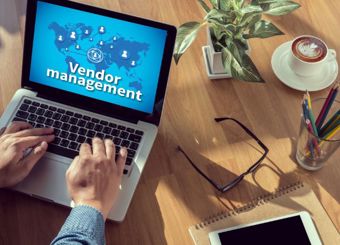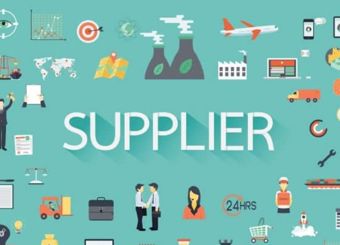3 steps for better supplier onboarding
‘If it’s not broken then don’t fix it’ they say, but what does ‘broken’ even mean? Does broken mean it doesn’t work at all, or is something broken if it’s inefficient and has room for improvement? Business functions definitely fall into this grey area, there’s always seemingly room for improvement, but how far can this be taken when resistance to change often sinks even the best ideas? One area that fits into this category is purchasing. Often labor-intensive and time- consuming, the process of raising requisitions, to placing purchase orders and eventually being invoiced for these orders can be very inefficient and expensive. One way to deal with this is to implement a well-managed Purchase to Pay system which, under the right circumstances, can drastically improve your organization’s purchasing. All well and good for your organization, but one obstacle to the success of this is convincing your suppliers to change their ways and use a supplier portal. Supplier portals do have great benefits for suppliers and can drastically improve their relationship with you.
Supplier Perspective: 5 Key Benefits of a Supplier Portal
- Track and acknowledge purchase orders
- Quickly flip PO's to e-invoices
- Register and manager credit notes
- Easily manage your company information
- Manage and acknowledge returns
With this functionality, it seems obvious that suppliers would want to use your supplier portal, but as we know ‘new’ can create resistance. They have their processes in place and deal with you the same way they deal with all their other clients, so why would they change for you? The key to onboarding suppliers on to your P2P system is to get this message across and convince them of what’s in it for them. This is easier said than done though. The chances are, it isn’t going to be one email message or a quick phone call to an account manager that does the job, but a series of communications to hammer home the benefits.
So, here’s our 3-step plan to onboarding suppliers.
1) Segment your suppliers
If you’re of the size to be implementing a supplier portal, it suggests you’ll have a vast number of suppliers, more than can be onboarded at once. So, before you jump in feet first, supplier segmentation is necessary to break down the task at hand. Careful consideration needs to be put in place to segment your suppliers. Your suppliers will be all shapes and sizes, with some critical to the success of your organization and others who are rarely used, but are good to have on board. By splitting suppliers based on criteria such as level of trade with them and importance to your organization, you can highlight which suppliers should be targeted first and with how many resources for onboarding onto your portal. Once you have your more critical suppliers on board, it provides breathing space that can be used to steadily on board those suppliers whose trade isn’t quite as significant and so not as critical to the early success of your P2P system. It also creates the fear factor that others are doing it, so they best not be left behind. Sometimes it’s just about creating critical mass.
2) Regular communication
Communication is key as they say, and this is absolutely the case here. You’re not going to be able to send a quick mass email out to your suppliers and have them all suddenly register on to your portal and leave their old methods behind. Regular communication is what is needed. Email messages are the easiest way to initially let your customers know about your new portal. They can provide a platform to build on and get that vital information to all your suppliers. An email containing a video explaining the portal is a great way to do this. Video now accounts for 74% of all online traffic (KPCB) and if given the choice between text or video on the same topic, 59% of senior executives said they would choose video (MWP). So, embed a helpful video guide explaining the portal and how to use it into an email to get your message across. Once you’ve communicated several times via email, phone calls are the next step. Whilst emails can do the job for mass communication and creating action of the many, there will always be a time and place for phone calls, certainly to help mop up key suppliers. That personal call to the suppliers who you are yet to get on board can make all the difference. If you speak to someone with a self-interest to help out at your supplier, they can help drive the process from within and take up good use of your portal. So, your supplier’s key account manager is a good place to start, or a senior commercial or sales lead who could be affected by future non-payments if non -compliance with the portal continued. Which leads us nicely to…
3) Set deadlines and consequences
If you allow your suppliers to believe they can continue to trade with you like they always have, then they may decide that it isn’t worth their time and effort to change their processes with you. Setting deadlines and subsequent consequences for missing these deadlines shows your suppliers the importance of them onboarding in order to not lose your trade, something they definitely won’t want to happen! Being clear on the eventual consequences will not hamper your relationship with your suppliers, as long as you are providing them with all the help necessary to take up use of the portal, and you keep pointing out the benefits of complying for them, beyond simply being able to trade. The supplier onboarding process will take time and effort, but its time well spent to improve your future purchasing process and supplier relationships. Once onboard you have suppliers who can self-serve and better manage the transactions you have in one central location, whilst also providing auditable data. And for you it’s an accounts payable team freed up to thank you every day! Want to know how a Purchase to Pay system and Supplier Portal can help your organization? Then get in touch today.






